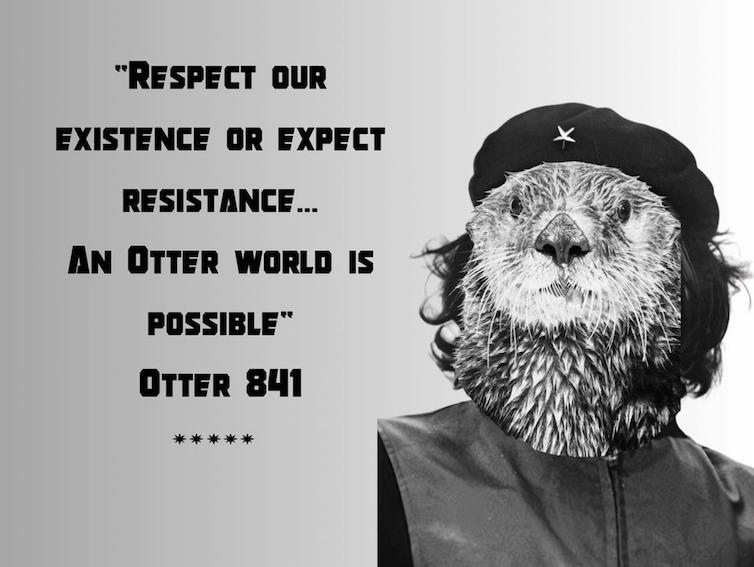Memes galore centered on the “orca revolution” have inundated the online realm. They gleefully depict orcas launching attacks on boats in the Strait of Gibraltar and off the Shetland coast.
One particularly ingenious image showcases an orca posed as a sickle crossed with a hammer. The cheeky caption reads, “Eat the rich,” a nod to the orcas’ penchant for sinking lavish yachts.
A surfboard-snatching sea otter in Santa Cruz, California has also claimed the media spotlight. Headlines dub her an “adorable outlaw” “at large.”

Memes position the otter as a renegade revolutionary, modeled on Ché Guevara.
thesurfingotter via Instagram
Memes conjure her in a beret like the one donned by socialist revolutionary Ché Guevara. In one caption, she proclaims, “Accept our existence or expect resistance … an otter world is possible.”
My scholarship centers on animal-human relations through the prism of social justice. As I see it, public glee about wrecked surfboards and yachts hints at a certain flavor of schadenfreude. At a time marked by drastic socioeconomic disparities, white supremacy and environmental degradation, casting these marine mammals as revolutionaries seems like a projection of desires for social justice and habitable ecosystems.
A glimpse into the work of some political scientists, philosophers and animal behavior researchers injects weightiness into this jocular public dialogue. The field of critical animal studies analyzes structures of oppression and power and considers pathways to dismantling them. These scholars’ insights challenge the prevailing view of nonhuman animals as passive victims. They also oppose the widespread assumption that nonhuman animals can’t be political actors.
So while meme lovers project emotions and perspectives onto these particular wild animals, scholars of critical animal studies suggest that nonhuman animals do in fact engage in resistance.
Nonhuman animal protest is everywhere
Are nonhuman animals in a constant state of defiance? I’d answer, undoubtedly, that the answer is yes.
The entire architecture of animal agriculture attests to animals’ unyielding resistance against confinement and death. Cages, corrals, pens and tanks would not exist were it not for animals’ tireless revolt.
Even when hung upside down on conveyor hangars, chickens furiously flap their wings and bite, scratch, peck and defecate on line workers at every stage of the process leading to their deaths.
Until the end, hooked tuna resist, gasping and writhing fiercely on ships’ decks. Hooks, nets and snares would not be necessary if fish allowed themselves to be passively harvested.
If they consented to repeated impregnation, female pigs and cows wouldn’t need to be tethered to “rape racks” to prevent them from struggling to get away.
If they didn’t mind having their infants permanently taken from their sides, dairy cows wouldn’t need…